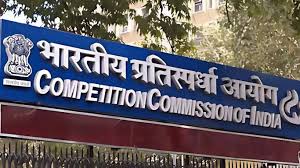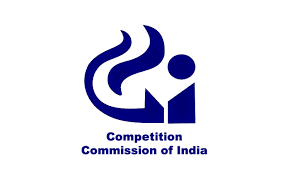


Competition Law | July 15, 2025
“The role of the Competition Commission of India in regulating anti-competitive practices”
This Article is Written by Anshika LL.B 2nd year student at National Law University Odisha
“The Competition Commission of India (CCI)” has an important role in operating anti-competitive practices and raise fair competition within Indian market. The CCI an autonomous body which focuses on preventing practices harming consumers and innovation, was established in 2003 under the “Competition Act, 2002”. It prevents exercises such as price fixing, bid rigging, misuse of commanding market positions.
Legal Framework
The legal statute governing competition in India emerged from the “Monopolies and Restrictive Trade Practices (MRTP) Act, 1969” to a more detailed Competition Act, 2002. This Act of 2002 applies to all enterprises in India irrespective of size with the primary objective of progressing and strengthening competition, protect interests charged on consumer while purchase and ensure freedom of trade.
Some key points of legal framework include:
- Sec 3: This section addresses anti-competitive agreements that limit competition such as cartels e.g., in cement, sugar, steel industries that cooperate in an unlawful way to fix prices, bound output or share markets.
- Sec 4: This section prohibits dominant firms from abusing their market power through practices like charging baseless prices, imposing unjust conditions or engaging in predacious pricing.
- Sec 5 & 6: The Act governs combinations, which are mergers, acquisitions, and amalgamations having particular asset or turnover sizes. These need to be notified to and cleared by the CCI before their occurrence, particularly if they are found to have an "appreciable adverse effect on competition" (AAEC) in the concerned market in India. The CCI reviews these in order to avoid monopolistic arrangements and ensure fair market conditions.
Investigation and Enforcement Powers
The CCI can initiate investigation in three ways:
- Suo Moto i.e. on its own initiative.
- Information received from individuals, consumers, or associations under sec 19(1)(a) of the Act.
- On referral from the Central Government, State Government or a statutory body under sec 19(1)(b) of the Act.
- If a Prima Facie case is found then CCI directs the Director General (DG) to carry on an inquiry (Sec 26(1)).
- If no prima facie case exists then investigation is closed (Sec 26(2)).
- The CCI can impose monetary fines, order the breakup of cartels, and require companies to change business practices (Section 27). Penalties can also be levied for non-compliance with directions or for providing misleading information.
Legal Developments
The Indian competition law's regulatory framework has experienced an important transformation, from the “Monopolies and Restrictive Trade Practices (MRTP) Act, 1969”, to the better version of the Competition Act, 2002. The transformation signified a fundamental realignment of the approach to regulating markets, from controlling monopolies to promoting and sustaining competition.
Competition Act, 2002, contained major provisions outlining and making illegal anti-competitive agreements (Section 3), abuse of dominant market position (Section 4), and control combinations (mergers, acquisitions, and amalgamations) likely to have an "appreciable adverse effect on competition" (AAEC) (Sections 5 and 6).
Other legal developments are:
- Procedural Clarifications: The Supreme Court, in decisions like CCI v. SAIL, explained procedural powers of the CCI, demanding that a prima facie belief under Section 26(1) be given before an order to inquire is made, ensuring principles of due process and natural justice.
- Enforcement Effectiveness: The Excel Crop Care Ltd. v. CCI (2017) decision reinforced CA's power to impose penalties for cartelization, making explicit the way AAEC should be analysed, based on factors like market share, barriers to entry, and effects on consumers.
- De Minimis Exemption: The Central Government has come up with the 'De Minimis' exemption for a few smaller combinations with a view to making the regulatory process simpler and lightening the burden on small businesses so that the CCI can focus on transactions of more consequence.
- Evolving Interpretation: The CCI has over the years interpreted and enforced the provisions of the Act to respond to fresh challenges in different sectors such as pharmaceuticals, telecommunications, cement, and e-commerce, aligning its enforcement strategies with new market realities and intricate business practices.
These evolution points to a vibrant legal environment intended to enhance the CCI's efficacy and make competition law responsive and relevant to market realities.
One of the Judicial Precedent that indicated an even greater development in the field was CCI v. SAIL, In this case the Supreme Court elucidated the procedural powers of “the Competition Commission of India, i.e., Section 26(1) of the Competition Act, 2002”. The Court stated that the CCI is required to first form a prima facie belief regarding the presence of an anti-competitive practice or an distinguishable adverse effect on competition before it can direct the Director General (DG) to investigate and submit a report. This decision underscored the importance of remaining faithful to due process and natural justice values, so that an investigation is only directed to be initiated when there is sufficient preliminary evidence to undertake it.
Another major case was Excel Crop Care Ltd. v. CCI, The Supreme Court, here, reaffirmed the power of CCI in imposing fines for cartelization, a serious kind of anti-competitive agreement. The Court upheld the fine imposed by the CCI, emphasizing that while determining an "appreciable adverse effect on competition" (AAEC), several considerations must be taken. These factors include the players' market share, the existing entry barriers to entry for new players in the said market, and most importantly, the impact on customers of the cartelized behaviour. This ruling upheld the CCI's powers of enforcement against collusive practices and provided clarity on the holistic analysis required to ascertain anti-competitive damage.
Analysis
The issue here is whether Competition Commission of India is effective in regulating anti-competitive practices and promoting a fair market environment.
“The Competition Act, 2002” empowers the CCI to investigate and adjudicate anti-competitive conduct under sec 3 and 4. The CCI can start its proceedings suo moto or based on information received, and if prima facie issue is found then direct investigations under sec 26(1). It can issue direction or levy penalties upon confirmation of contraventions under section 27.
Application: “The Competition Commission of India (CCI)” was instrumental in eliminating anti-competitive practices in different industries. The CCI levied a whopping fine of ?6,307 crore on 11 cement firms for price-fixing and suppressing production, which was a blatant infringement of Section 3(3) of the Competition Act. In a similar vein, in “Builders Association of India v. Cement Manufacturers”, the Commission has held that parallel pricing coupled with communication between rival firms constituted cartelization. In yet another famous case of abuse of dominance, in 2018 CCI imposed a fine of ?136cr. on Google India Pvt. Ltd. for abusing its dominant position by modifying its search algorithm in favour of its products and thus infringing Section 4 of the Act. Within the e-commerce space itself, the Commission has gone looking for deep discounting and discriminatory treatment to favored sellers in the business model of entities like Amazon and Flipkart, indicating its expanding regulatory attention to digital platforms. The CCI has also stepped in formally in industries like telecom (Airtel, Vodafone), pharma, real estate, and government procurement, confronting a broad variety of anti-competitive conduct. Between the years 2013 and 2022, the CCI had imposed in 839 cases, made 317 prima facie orders under Section 26(1), and levied other penalties under Section 27. All these have had positive effects since there has been a drop in the market dominance of the penalized parties—for example, the market share of Google fell from 97% to 88% after CCI's enforcement action, and this shows the effectiveness of the Commission in fostering competitive market structures.
The CCI’s role in regulating anti-competitive practices has many aspects consisting of investigation, enforcement and advocacy. The CCI has showed success in identifying and penalizing anti-competitive practices across various sectors. In Pharmaceutical industry the CCI has been impressive in operating anti-competitive practices especially in identifying and penalising situations of misuse of dominant positions, price fixing and collusion. It has penalised companies like Himalaya and Glenmark for mandating “ No Objection Certificates” for stockists ensuring fair drug distribution. In cement Industry the CCI imposed huge fines on major manufacturers for cartelization and bid rigging in the case of Cement Manufacturer’s Association. In case of E-Commerce, the CCI fined Google heavily for abusing it position through practices like mandating billing system on Play Store and stifling competition in Android ecosystem. These actions of CCI clearly shows its commitment towards promoting a fair competitive market.
Despite success, the CCI has some constraints:
- Resource Restraints and Complexity: Less resource availability and the complexity of anti-competitive behavior, particularly in industries like pharma,hamper the efficiency of the CCI.
- Proactive Approach Required: In sectors like telecom and e-commerce, a proactive role is recommended to support more rigorous monitoring and enforcement drills and address future anti-competitive behavior.
- Regulatory Overlap: Collaboration with other regulators is suggested to address problems of regulatory overlaps. CCI is the legislative regulator for analyzing combinations under the Competition Act, 2002. Its analysis process plays a crucial role for market balance and consumers' protection interests.
- Review Process: The CCI examines contemplated combinations for harmful effects on competition. It may approve, reject, or recommend amendments to combinations to address concerns (Section 31). The CCI has a duty to decide within 210 days of notification, in default the combination is deemed approved.
- Major Judgments: The judgments of the CCI have impacted the regulation of mergers and acquisitions. For example, in the “Sun Pharmaceutical Industries Limited-Ranbaxy Laboratories Limited merger (2014)”, the CCI ratified the merger but with conditions, including the divestment of overlapping products, to prevent anti-competitive behaviour.
Competition Advocacy: Apart from enforcement, the CCI engages in competition advancement to promote awareness and sensitization on competition matters (Section 49(3)). It involves coordination with various stakeholders like enterprises, government, and educational institutions to shape economic behavior and educate the benefits of competition law. Advocacy is regarded as crucial, besides prosecution, to achieve the goals of competition rules.
Conclusion
“The Competition Commission of India” has proved to be very effective in its function of regulating anti-competitive behavior and combinations in India. It has been able to identify and punish numerous instances of anti-competitive behavior in numerous sectors, promoting healthy market structures and consumer protection. The legislative framework laid down by “the Competition Act, 2002”, provides the CCI with the power to investigate, charge penalties, and actively enforce competition promotion.
However, challenges such as limited resources, the complexity of certain anti-competitive conduct, and the need for a more active presence in dynamic markets such as the internet commerce remain. Future efforts must focus on increasing monitoring activities, encouraging greater cooperation with other regulatory bodies to prevent duplications, and continuously adapting its strategies to evolving market complexity and global best practices. Further studies on the long-term impact of CCI's interventions and the effectiveness of its lobbying activities would be helpful to inform continuous improvement.
Bibliography
- The Monopolies and Restrictive Trade Practices Act, No. 54 of 1969, INDIA CODE (1969).
- Jitendra Kumar, The Role of Competition Commission of India in Tackling Anti-Competitive Practices: An Evaluation of Commission's Effectiveness, CHARTERED SECRETARY, May 2023, at 71.
- Harshita & Arvind P. Bhanu, Role of Competition Commission of India in Regulation of Combinations: An Analytical Study, 5 INDIAN J. LEGAL REV. 189 (2025).
- Competition Comm’n of India, Annual Report 2013–14 to 2021–22, https://www.cci.gov.in/annual-report# (last visited July 2, 2025).
- Soumyajit Das & Nabanita Choudhury, Competition Commission of India and Its Role in Curbing Anti-Competitive Practices in the Indian E-Commerce Market, 5 INT’L J. MGMT., TECH. & SOC. SCIS. 9 (2020).
- Shivam Goel, Regulation of Combinations Under the Competition Law in India, SSRN ELECTRONIC J. (2014), https://doi.org/10.2139/ssrn.2485557.



Comments (0)